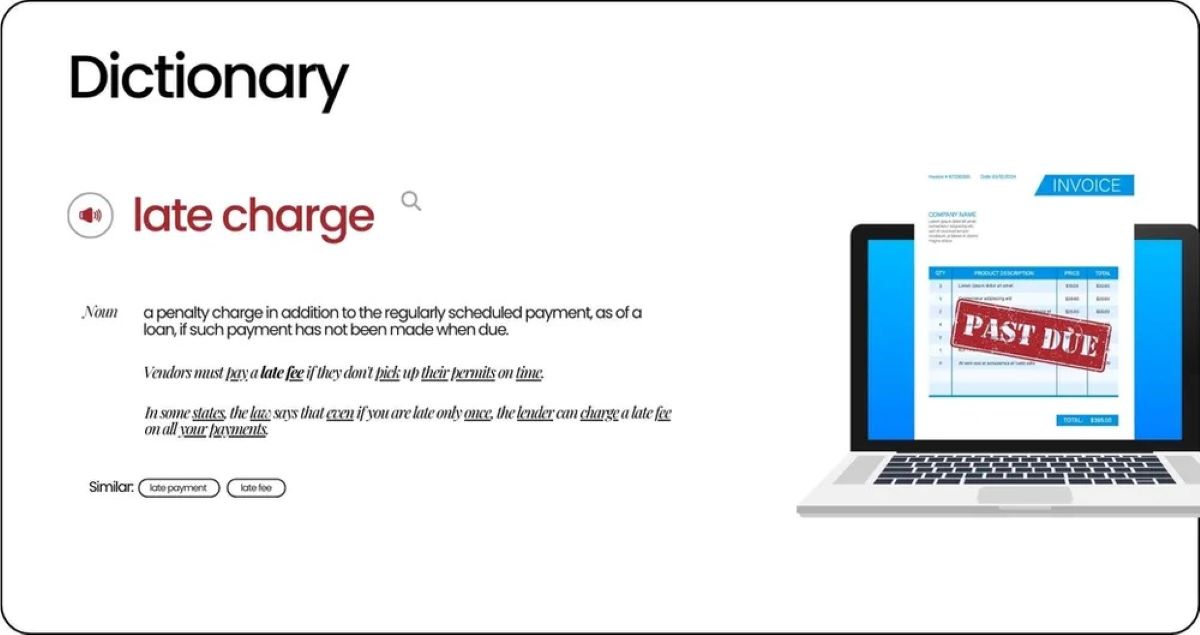

Finance
How Many Series Of Funding Before IPO
Modified: December 29, 2023
Learn about the finance journey from startups to IPO and the number of funding rounds involved. Gain insights into the essential series of funding for successful IPOs.
(Many of the links in this article redirect to a specific reviewed product. Your purchase of these products through affiliate links helps to generate commission for LiveWell, at no extra cost. Learn more)
Table of Contents
Introduction
When a company is looking to grow and expand, it often needs to secure funding to support its operations and drive innovation. One of the most common ways for companies, especially startups, to raise capital is through a series of funding rounds. These funding rounds typically occur before a company goes public through an initial public offering (IPO).
The process of fundraising before an IPO is known as pre-IPO funding, and it involves multiple series of funding rounds, each with its own purpose and level of investment. These series of funding rounds provide the company with the necessary funds to fuel growth, invest in research and development, hire talent, and expand into new markets.
In this article, we will explore the different stages of funding that companies go through before they reach the IPO stage. From the early days of seed funding to later rounds of series funding, we will delve into the characteristics and objectives of each stage, shedding light on the funding landscape and its impact on both companies and investors.
It’s important to note that the number of funding rounds and the specific terms may vary depending on the industry, size, and growth stage of the company. However, we will cover the most common series of funding rounds that companies typically pursue.
Now, let’s dive into the world of pre-IPO funding and explore the fascinating journey that companies embark on to achieve their ultimate goal of going public.
Seed Funding
Seed funding is the initial phase of pre-IPO funding where a company is in its infancy stage. This is often the first round of funding that a startup receives and is typically used to develop a minimum viable product (MVP), conduct market research, and hire a core team.
Seed funding is typically provided by angel investors, venture capital firms, or even friends and family of the founders. The amount of seed funding can vary greatly, ranging from a few thousand dollars to a few million dollars, depending on the company’s needs and the investors’ appetite for risk.
During the seed funding stage, investors are taking a leap of faith in the founders and their vision. While there may not be a proven business model or substantial revenue at this stage, investors are looking for innovative ideas, a strong team, and potential market demand for the product or service. This early investment helps the company to establish its credibility and lay the foundation for future growth.
Seed funding is crucial for startups as it provides the financial runway and resources needed to validate the concept, develop the product, and build a customer base. It allows founders to refine their business model, conduct market experiments, and gather valuable feedback to iterate and improve their offering.
In return for their investment, seed investors usually receive equity in the company, which means they become partial owners and have a stake in the company’s success. As the company progresses through subsequent funding rounds and achieves milestones, the value of their equity may increase.
Seed funding is high-risk, high-reward for both the company and the investors. Many startups fail to secure additional funding beyond the seed stage, but successful companies that gain traction and demonstrate growth potential can attract larger investments in subsequent funding rounds.
Overall, seed funding serves as the critical first step for companies on their journey towards an IPO. It allows startups to build a solid foundation, refine their business models, and attract further investment to fuel their growth.
Series A Funding
After securing seed funding and successfully launching their product or service, startups often seek series A funding to scale their operations and accelerate growth. Series A funding is typically the first significant round of institutional investment that a company receives.
During the series A funding round, startups have typically proven their business model and demonstrated market validation. This round of funding is aimed at helping them expand their customer base, further develop their product or service, and hire key personnel.
The amount of series A funding can vary greatly, ranging from a few million dollars to tens of millions, depending on the company’s growth potential, market size, and the investors’ confidence in the team’s ability to execute their business plan.
Series A investors are typically venture capital firms that specialize in early-stage investments. These investors conduct thorough due diligence on the company’s financials, team, market opportunity, and competitive landscape before committing capital.
In exchange for their investment, series A investors usually receive a significant equity stake in the company, and may also request a seat on the board of directors. They bring not only financial resources but also strategic guidance and industry expertise to help the company navigate its growth journey.
Series A funding is a critical milestone for startups as it provides the necessary fuel to expand the team, improve the product, and scale customer acquisition efforts. It enables companies to enhance their infrastructure, build a sales and marketing engine, and strengthen their market position.
Securing series A funding is highly competitive, with a high bar for companies to meet in terms of market traction and growth potential. Startups that successfully raise series A funding are often seen as more credible by subsequent investors, paving the way for future funding rounds.
Overall, series A funding is a significant stepping stone for companies on their path to an IPO. It allows startups to accelerate their growth, establish a strong market presence, and set the stage for further expansion and success.
Series B Funding
Once a company has achieved significant growth and traction, it may seek series B funding to further scale its operations, expand into new markets, and solidify its market position. Series B funding is the second major round of financing that a company typically raises.
In the series B funding round, companies have usually surpassed the initial stages of development and have demonstrated a strong business model with a clear path to profitability. This round of funding is aimed at fueling rapid expansion and capturing a larger market share.
The amount of series B funding can range from tens of millions to hundreds of millions of dollars, depending on the size of the opportunity, the company’s growth trajectory, and the investors’ belief in the company’s ability to execute its strategy.
Typically, series B investors include venture capital firms, private equity firms, and strategic investors who see the potential for substantial returns on their investment. These investors conduct in-depth due diligence on the company’s financials, market competitiveness, growth prospects, and management team.
In exchange for their investment, series B investors usually receive an equity stake in the company and may negotiate additional rights or preferences. The funding is used to further scale the business, invest in research and development, expand marketing and sales efforts, and potentially make strategic acquisitions.
Series B funding is pivotal in propelling a company to a higher level of growth and market dominance. It allows companies to build upon their initial success and make significant investments in scaling operations, building brand awareness, and expanding their customer base.
Securing series B funding is highly competitive, as companies need to demonstrate sustainable growth, a strong market position, and a compelling business case. Startups that successfully raise series B funding are often well-positioned for future growth and attracting partnerships or acquisitions from larger companies.
Overall, series B funding represents a crucial inflection point in a company’s journey towards an IPO. It provides the financial resources to fuel expansion, solidify its market presence, and set the stage for even greater achievements.
Series C Funding
After successfully raising series A and series B funding, companies that continue to exhibit strong growth and market traction may seek series C funding to further scale their operations, invest in innovation, and potentially prepare for an IPO. Series C funding is often sought by companies transitioning from a startup to a more mature phase.
Series C funding rounds typically involve larger investment amounts compared to earlier rounds, ranging from tens to hundreds of millions or even billions of dollars. The specific amount raised depends on various factors, including the company’s growth prospects, market size, and potential exit opportunities.
At this stage, series C investors are typically a mix of venture capital firms, private equity firms, hedge funds, and strategic investors. These investors conduct thorough due diligence, assessing the company’s financials, competitive position, product roadmap, and market potential.
Series C funding is often used to finance significant expansion efforts, such as geographic expansion, product diversification, and strategic acquisitions. It is also directed towards marketing and branding initiatives to solidify the company’s market leadership.
In exchange for their investment, series C investors typically receive an equity stake in the company and may negotiate additional rights or preferences. As companies progress through subsequent funding rounds, the ownership stakes of earlier investors may be diluted.
Series C funding represents a crucial inflection point for companies, as it signifies their ability to achieve scalability, penetrate larger markets, and command significant market share. It also serves as validation for the company’s business model and growth potential.
Securing series C funding can be highly competitive, as companies need to demonstrate a track record of sustainable growth, strong financials, and a clear path to profitability. Successful series C funding rounds can significantly enhance a company’s valuation and attract attention from both investors and potential acquisition suitors.
Overall, series C funding is instrumental in propelling a company towards an IPO or other exit strategies. It provides the necessary capital and resources to further expand operations, invest in strategic initiatives, and solidify the company’s market position.
Series D Funding
Series D funding, also referred to as late-stage financing, is the next significant round of funding that companies may pursue after successfully raising series A, B, and C funding. Series D funding is typically sought by companies that have already achieved substantial growth and are looking to further expand their operations, pursue strategic acquisitions, or prepare for an IPO.
In series D funding rounds, companies have usually established themselves as market leaders and have impressive financial metrics. They have proven their ability to generate revenue, attract a large customer base, and scale their operations effectively.
The amount of capital raised in series D funding can vary greatly, ranging from tens of millions to billions of dollars. This funding round typically involves a mix of existing investors, such as venture capital firms and private equity funds, and may also include new investors, such as institutional investors or corporate venture capital arms.
Series D funding is often used to finance further growth initiatives, such as expanding into new markets or geographies, investing in research and development, enhancing infrastructure and technology, and making strategic acquisitions to strengthen the company’s position in the market.
At this stage, investors conducting due diligence will scrutinize the company’s financial performance, market position, competitive advantages, and growth plans. They will assess the company’s ability to sustain and accelerate its growth trajectory, as well as its potential for generating substantial returns on investment.
In exchange for their capital, series D investors typically acquire an equity stake in the company. They may negotiate additional rights and preferences, such as board seats or preferred stock. The level of ownership and participation of earlier investors may be further diluted in this round.
Securing series D funding can be highly competitive, as companies need to demonstrate a clear path to profitability, strong market differentiation, and potential for significant market share expansion. Successful series D funding rounds can provide a company with the necessary resources to penetrate new markets, further develop its product portfolio, and ultimately position itself for a successful IPO or other exit strategies.
Overall, series D funding represents an important milestone for companies as they navigate their path towards maturity and potential public offering. It enables companies to fuel growth, expand their operations, and solidify their market position in preparation for the next phase of their journey.
Pre-IPO Funding
Pre-IPO funding refers to the financing rounds that occur in the period leading up to a company’s initial public offering (IPO). These funding rounds are crucial for companies to secure the necessary capital to prepare for the IPO process and ensure a successful public debut.
Pre-IPO funding rounds can take various forms, including late-stage venture capital funding, private placements, or even strategic investments from institutional investors or large corporations. These investments often occur when companies have achieved significant market traction, proven their business model, and demonstrated a clear path to profitability.
The amount of capital raised in pre-IPO funding can be substantial, ranging from tens of millions to billions of dollars. This funding is primarily used to further scale operations, expand into new markets, enhance marketing efforts, and optimize the company’s financial position before going public.
Investors participating in pre-IPO funding rounds are typically institutional investors, private equity firms, or specialized funds with experience in late-stage investments. They carefully evaluate the company’s financial performance, competitive landscape, and growth prospects to assess the potential risks and returns.
Typically, pre-IPO investors acquire equity in the company, and the terms of their investment may include additional protections or preferential treatment in the event of an IPO or subsequent corporate actions. These investors may also play a significant role in guiding the company’s strategic direction and governance.
Pre-IPO funding is a critical phase for companies as it assists with the final preparations for the IPO process. It provides the necessary funds to strengthen the company’s infrastructure, refine its financial reporting systems, hire key executive talent, and ensure compliance with regulatory requirements.
Securing pre-IPO funding requires a strong track record of growth, profitability, and market positioning. It also depends on the overall investor sentiment and market conditions, as these factors can impact the valuation and terms of the investment.
Overall, pre-IPO funding serves as a stepping stone for companies as they transition from the private to the public markets. It allows them to fine-tune their operations, build investor confidence, and lay the groundwork for a successful IPO that can unlock further growth and opportunities.
Conclusion
Securing funding is a critical aspect of a company’s growth journey, and the series of funding rounds before an IPO play a vital role in providing the necessary capital to fuel expansion, build infrastructure, and solidify market presence. From seed funding to series A, B, C, and potentially series D funding, each round represents a significant milestone in a company’s development.
Seed funding allows startups to bring their ideas to life, refine their business models, and validate market demand. Series A funding provides the necessary resources to scale operations, attract top talent, and solidify their position in the market. Series B funding enables companies to accelerate growth, expand into new markets, and optimize their operations. Series C funding propels companies towards market dominance, fostering rapid expansion and strategic initiatives. Finally, pre-IPO funding helps companies prepare for the IPO process, ensuring a successful public debut.
Throughout these funding rounds, companies attract various investors, ranging from angel investors and venture capital firms to private equity funds and institutional investors. These investors provide not only financial resources but also strategic guidance, industry experience, and invaluable networks that contribute to a company’s success.
Securing funding in each round is highly competitive, and companies need to demonstrate growth potential, market traction, and a clear path to profitability. Success in one funding round often paves the way for subsequent rounds, enabling companies to secure even larger investments to support their growth aspirations.
Ultimately, the goal of these funding rounds is to position companies for a successful IPO or other exit strategies. Going public provides companies with greater visibility, access to public markets, and opportunities for future fundraising. It also rewards early investors who took the risk and supported the company during its early stages.
However, it’s important to note that the journey to an IPO is not guaranteed for every company. The path can be challenging, and there are risks and uncertainties along the way. Not all companies will reach the IPO stage, and some may opt for other exit strategies, such as acquisitions or mergers.
In conclusion, the series of funding rounds leading up to an IPO are essential for companies to fuel their growth, attract talent, and establish a strong market presence. Each funding round builds upon the previous one, helping companies achieve key milestones and set the stage for future success.














